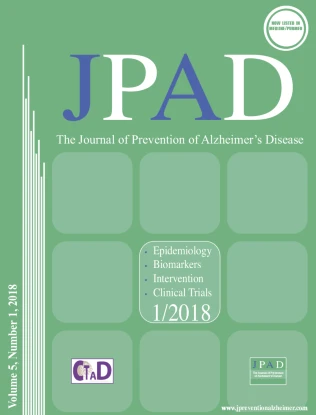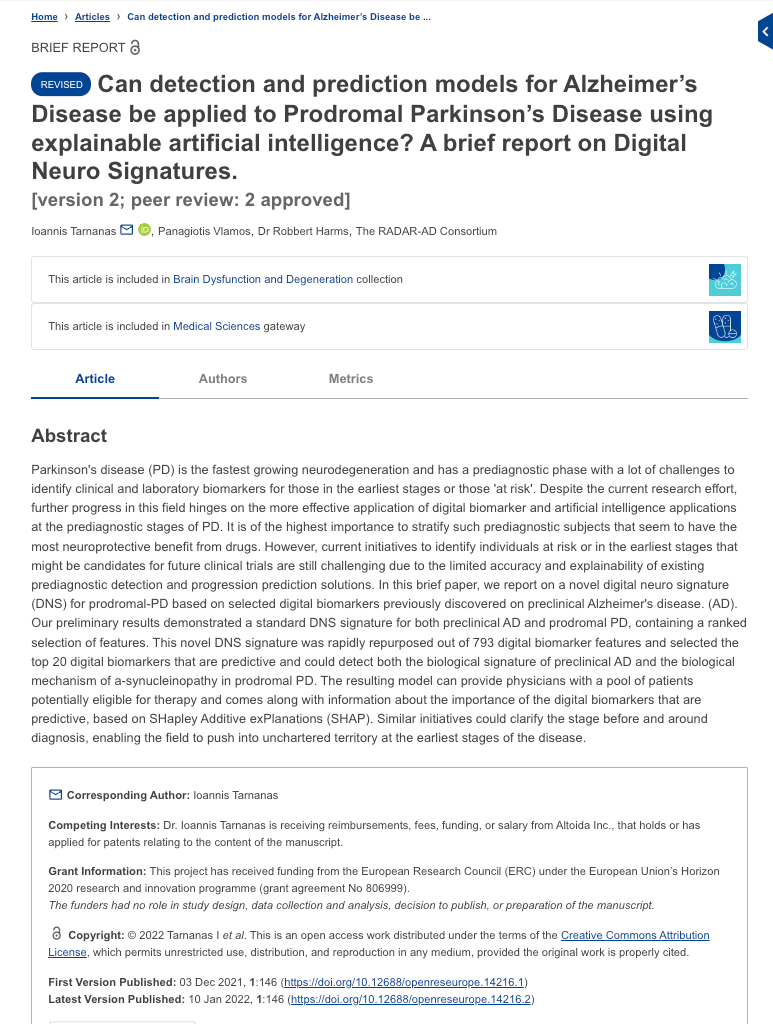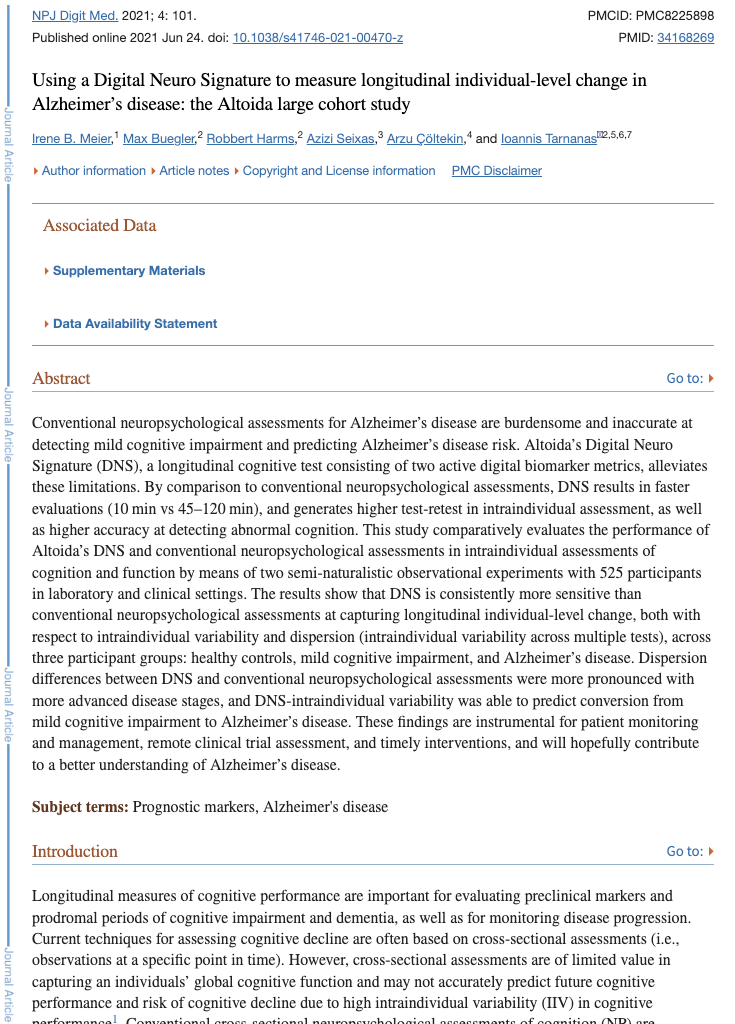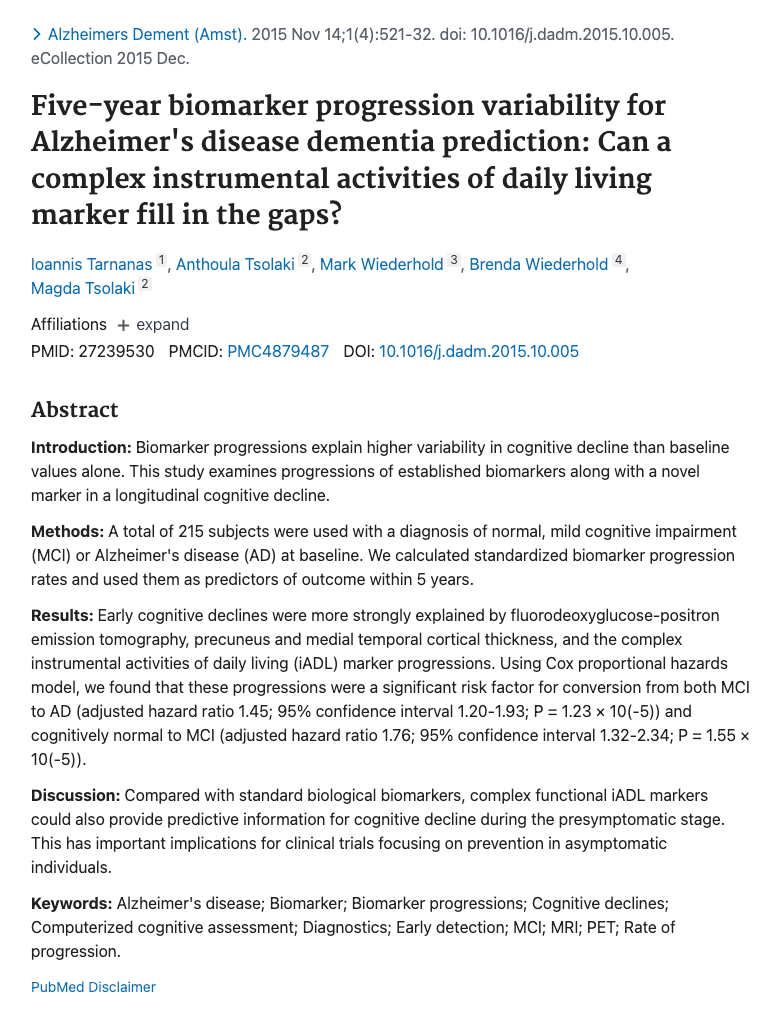Publications
Publications and Journals for Alzheimer’s prevention and better brain health crafted by experts in Neurology
Publications
Published in The Journal of Prevention of Alzheimer's Disease
06.14.24
Digital Health Technologies for Alzheimer’s Disease and Related Dementias: Initial Results from a Landscape Analysis and Community Collaborative Effort
- The study underscores the critical role of digital health technologies (DHTs), such as the Altoida Digital Biomarker Platform, in clinical decision-making, allowing for early signals of disease onset and reliable ways for tracking therapeutic responses.
- A total of 106 different technologies for Alzheimer’s disease and related dementia assessment were identified covering diverse populations such as those with Lewy Body, vascular dementias, and frontotemporal dementias.
- This review confirms the significant potential of DHTs as clinicians and researchers seek clarity and insights that traditional assessment cannot provide.
Read More

Published in Nature Digital Medicine
12.18.23
Augmented reality versus standard tests to assess cognition and function in early Alzheimer’s disease
- The study conducted by the independent consortium RADAR-AD, demonstrated the Altoida Digital Biomarker Platform can identify prodromal Alzheimer's disease as effectively as classical neuropsychological tests, but in a significantly shorter period of time.
- The Altoida Digital Biomarker Platform can effectively identify preclinical Alzheimer's disease, a task highly challenging for classical neuropsychological tests.
- The Altoida Digital Cognitive Assessment could be administered repeatedly with no learning effects.
Read More

Published in Open Research Europe
12.03.21
Can detection and prediction models for Alzheimer’s Disease be applied to Prodromal Parkinson’s Disease using explainable artificial intelligence?
- The Altoida Digital Biomarker Platform was effective in extracting new information for the training of machine learning models to potentially distinguish prodromal Parkinson’s disease (PD).
- The primary contributing group of features contributing to prodromal PD classification came from both motor and non-motor components of the augmented reality exercise.
Read More

Published in National Library of Medicine
03.03.21
Using a Digital Neuro Signature to measure longitudinal individual-level change in Alzheimer’s disease
- Altoida’s Digital Biomarkers effectively monitored individual-level change in cognition over time.
- In this data set of healthy controls, individuals with mild cognitive impairment and those with Alzheimer’s disease, they proved to be more sensitive than conventional neuropsychological assessments.
- These findings are instrumental for patient monitoring and management, remote clinical trial assessment, and timely interventions
Read More

Published in Alzheimer's Association
08.19.20
Digital biomarker-based individualized prognosis for people at risk of dementia
- Altoida’s Digital Biomarkers can differentiate between healthy individuals and those at risk of dementia progression within three years.
- Such digital biomarker prognostic models could accurately classify individuals with slow or rapid cognitive decline, performing similarly in both supervised and unsupervised environments.
- A machine learning model trained to differentiate between individuals with mild cognitive impairment, with and without amyloid pathology, achieved excellent diagnostic performance.
Read More

Published in National Library of Medicine
10.20.19
Five-year biomarker progression variability for Alzheimer's disease dementia prediction
- A computerized progression marker based on iADLs and virtual reality correlated with changes in FDG-PET scores, increases in ventricular volume, declines in whole-brain volume, and progressions in medial temporal cortical thinning in individuals with mild cognitive impairment and Alzheimer’s disease.
- Persons at risk for Alzheimer’s disease could benefit by using novel, computerized screening markers that reliably identify cognitive changes at the earliest disease stages.
Read More

